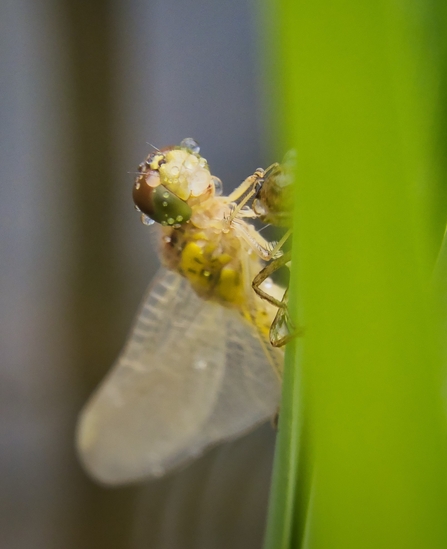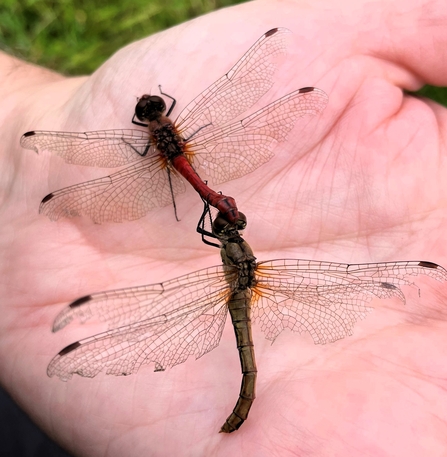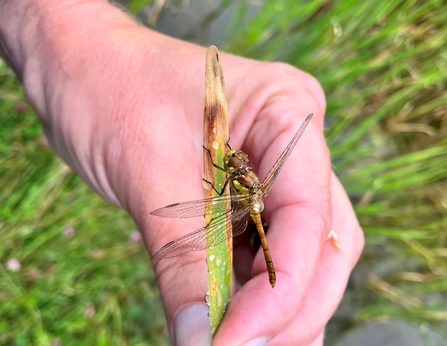After the incredibly dry summer of 2022, last year was the complete opposite, with annual rainfalls well above the normal average. As dragonflies spend most of their life underwater and need their pond or stream to maintain water levels all year round, it was perfect for their life cycle. The rain did, however, make it very difficult to survey dragonflies as they tend to hide in vegetation when it is raining. As a result, sightings were down 47% year on year; however, there were a number of highlights.
The British Dragonfly Society classify a “priority site” in the North East as one with
• Nationally scarce species breeding
• Locally scarce species breeding
• 14 or more species
Rainton Meadows met two of those criteria, with confirmed sightings of 18 species and a pair of willow emerald damselflies at Joe's Pond, making our wonderful SSSI, the most northerly site where they appear to be breeding. Low Barns Nature Reserve also had 14 species recorded, and a former Durham Wildlife Trust site, Brasside Pond, once again was the best place to see small red-eyed damselflies, which are very rare this far north.



